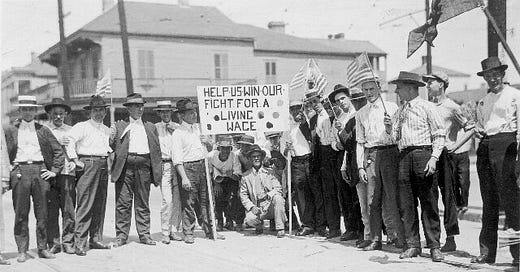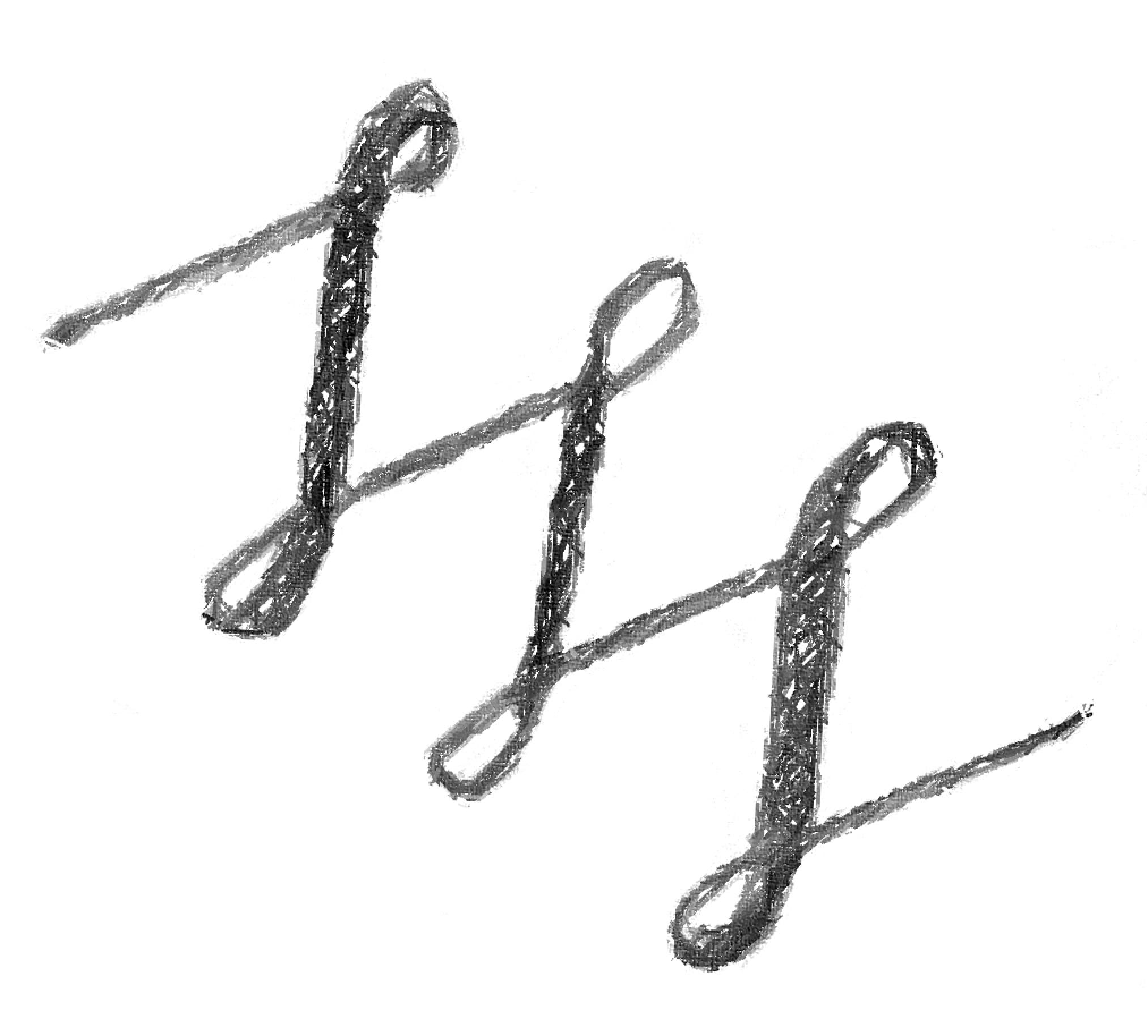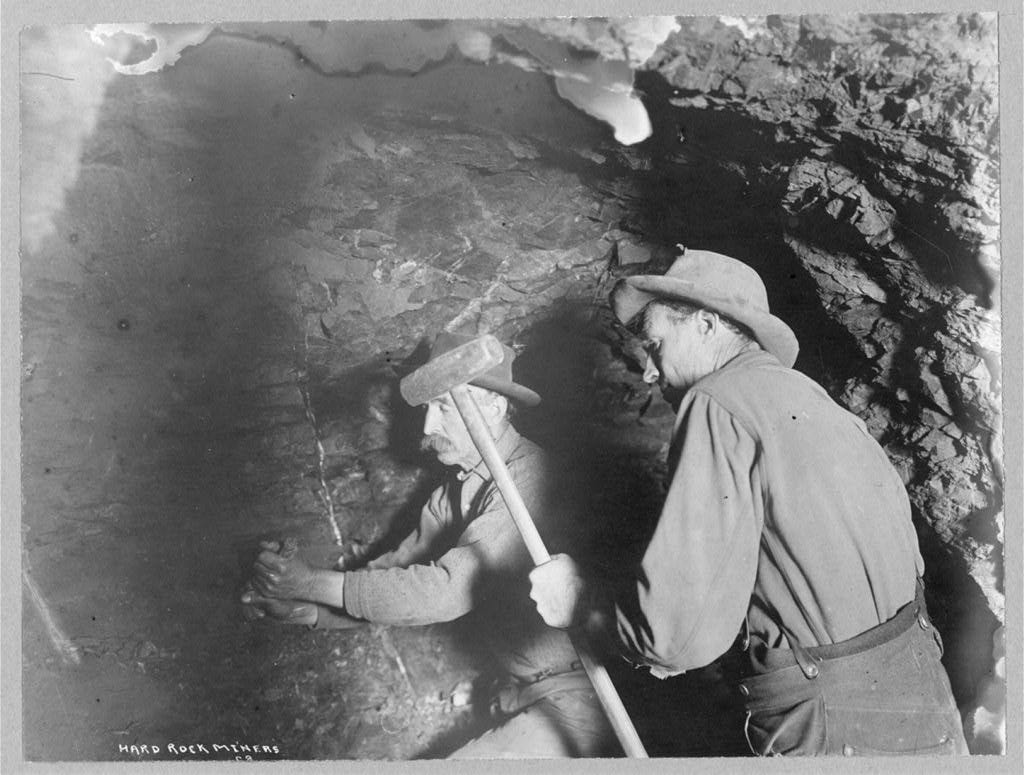Hi all,
Thank you for joining me for today’s song, “Solidarity Forever”, by Ralph Chaplin, sung by Pete Seeger with the Almanac Singers. If you’d like to hear the song before you read about it, I’ve included a YouTube video below the article. For Japanese students, vocabulary words in bold are provided in Japanese below. TOEIC (PBT) 450+, Eiken 2, CEFR B1.
You can listen to each article of “Social Issues in Song” on the Substack App. Download it here:
(581 words)
The music for today’s song is quite old. It began in the U.S. as a religious song written in the 1850s. Later, the song "John Brown's Body" used the same tune, but the words were about a man who tried to encourage a slave rebellion at Harpers Ferry in 1859. This song was popular among Union soldiers during the American Civil War (1861-1865). Later, in 1861, the words to “The Battle Hymn of the Republic" were written by Julia Ward Howe. She wrote new lyrics that gave the song a more religious and patriotic tone, making it a hymn for the Union cause.
As the industrial revolution progressed, workers realized that they had very little power against large companies and the rich men who owned them. The workers experienced many hardships, including very low pay, bad houses to live in, dangerous working conditions, little or no health care, and poor education for their children. All over the country, workers started to form unions. Sometimes they stopped working and demanded that the conditions change. Sometimes they lost, but other times, they won and they received better pay and better working conditions. They learned that when the union members stayed together (solidarity), they were more powerful.
Ralph Chaplin was a poet, artist, writer, and helped organize the Industrial Workers of the World (IWW). Chaplin wrote the words to "Solidarity Forever" in 1915. There was going to be a march led by Lucy Parsons, a founding member of the IWW. Ralph Chaplin said he wanted a song that was exciting and had a chorus that was strong and proud.
The first verse talks about the effects of working together in a union. It makes people feel stronger. Being alone (the weak strength of one), you don’t have much power.
When the union’s inspiration through the workers’ blood shall run
There can be no power greater anywhere beneath the sun
Yet what force on earth is weaker than the feeble strength of one
But the union makes us strong
Solidarity forever
Solidarity forever
Solidarity forever
For the union makes us strong
The workers are the people who dug the ground to build farms. They built the tall buildings in the cities…
It is we who plowed the prairies; built the cities where they trade
Dug the mines and built the workshops, endless miles of railroad laid
Even though they did these important things, they were not paid enough to feed their families:
Now we stand outcast and starving midst the wonders we have made
But the union makes us strong
The owners of the factories and mines made millions of dollars, but they never dug out the coal, and they never worked long hours on a factory line for very little pay.
They have taken untold millions that they never toiled to earn
The union workers understood that without the workers, the factories would stop. The owners would lose money day after day.
But without our brain and muscle not a single wheel can turn
We can break their haughty power, gain our freedom when we learn
That the union makes us strong
The last verse inspires people to work together to overcome injustice and to work for a better future:
In our hands is placed a power greater than their hoarded gold
Greater than the might of atoms, magnified a thousand-fold (a thousand times)
We can bring to birth a new world from the ashes of the old
For the union makes us strong
Question:
Have you ever worked together with others and found that you had even more power than you would working alone?
Vocabulary
encourage 奨励する
slave rebellion 奴隷反乱
patriotic 愛国的
hymn 賛美歌
experience 経験
hardship 困難
feeble 弱々しい
dug (dig) 掘る
plow 耕す
prairie 草原
mine 鉱山
outcast 追放者
starve 飢える
midst (amidst) ~のうち
untold 数え切れない
haughty 傲慢な
hoard 蓄える
atoms 原子
magnified 拡大
ash 灰
Sources
Ashbaugh, C. (2012). Lucy Parsons: An American revolutionary. Haymarket Books.
“John Brown’s body” song, 1861. “John Brown’s Body” Song, 1861 | State Historical Society of Iowa. https://history.iowa.gov/history/education/educator-resources/primary-source-sets/abolitionist-movement/john-browns-body-song Accessed 15 Sep 2024.
Kornbluh, J. L., Thompson, F., & Rosemont, F. (2011). Rebel voices: An IWW anthology. PM Press.
Solidarity forever. Zinn Education Project. (2022, April 28). https://www.zinnedproject.org/materials/solidarity-forever/ Accessed 15 Sep 2024.









My union insurance has rebuilt my aging body a number of times since age 62 (1st knee replaced, and was able to continue climbing mountains and returning to base camp on 2 & 3 week trips in Sierras & closer to home in my coastal mountains, until a few years ago when thin air slowed me down! ) Union years still reward in contacts w old coworking friends as well. Though we’ve all shuffled off geographically!
I sang the words to John Browns body… didn’t think I’d remember… but the 3rd grade we must have begun singing various sings all to same melody!!! Came back instantly after reading your Substack🤗